- Call us: 01444 237070
- Contact Us
- Stores
- Sign In / Register
-
- Back
- Used Cameras
- Used Accessories
- Used Lenses
- Used Video
- Used Film Equipment
- Used Stock Alert
- Used Blank Test
- Sell or Part Exchange
- Used Clearance
- Recently Added Used Equipment
- Park Picks
- All Used Black Friday Deals
- Faulty
- Trade-In
- Blog
- New in
- Call us
- Contact us
- Stores
- Sign in
- Categories
- Tips & Inspiration
- Reviews
- News
- Events
- Features
- Buying Guides
- Competitions
How to Buy a Second-Hand Camera
There are plenty of reasons to invest in used camera equipment, not least as it is a great way to save money. If you know what to look for, a second-hand camera should deliver the same performance as a brand new one and can often be found with a considerable saving. After weighing up the pros and cons and deciding to buy second-hand, you might be wondering exactly how to buy a second-hand camera.
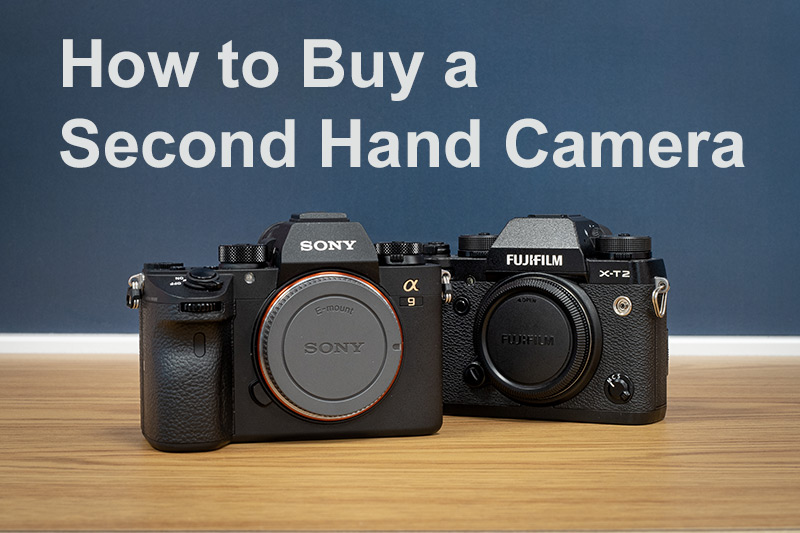
However, our top tips will help you to understand what to look for in a used camera or lens you’re considering, where to shop safely and when to walk away to avoid disappointment, so you can secure a great deal and find the perfect gear to enjoy for years to come.
Where to Buy a Second-Hand Camera
You can find second-hand cameras for sale both in-store and online, however, some online marketplaces often lack any substantiated information about the seller. There may be no return policy, and you might even risk buying equipment which isn’t fit for purpose. At worst, marketplace buyers can be exposed to scams from unscrupulous sellers and are best approached with extreme caution, particularly if you’re new to photography.
Buying from an established photography business, especially one where you can examine equipment in-store, is without question the safest way to buy a second-hand camera. A photography business will check, inspect and test equipment thoroughly before offering it to their customers. Additionally, they will often grade the condition of used gear, which provides a good indication of what condition it’s in and what performance to expect.
A reputable second-hand dealer will also supply some form of guarantee, which instils peace of mind, knowing it will work properly. When considering where to shop, we recommend sticking with a legitimate company who want satisfied customers and repeat business.

What Should I Look for When Buying a Second-Hand Camera?
When considering any second-hand camera equipment there are some key things to look for, as well as some things to avoid. Our top tips will teach you how to check a second-hand camera and lens, what to test, and what to look out for to make sure you’re buying dependable gear which will last.

Inspect the Lens
It’s important to check used lenses thoroughly, whether fixed on a compact camera, or an interchangeable lens for a DSLR or mirrorless. A brand-new lens will show no signs of use, whereas second-hand ones may have superficial marks on the casing and around the lens mount. Light signs of use are nothing to worry about and will be reflected in the price, however we recommend avoiding equipment with any cracks or deep scratches.
Once you’re happy with the cosmetic appearance, check that any switches and rings work correctly. A focus ring should turn smoothly in both directions with light resistance, as should an aperture ring. Check switches work, for example by changing between Manual and Autofocus.
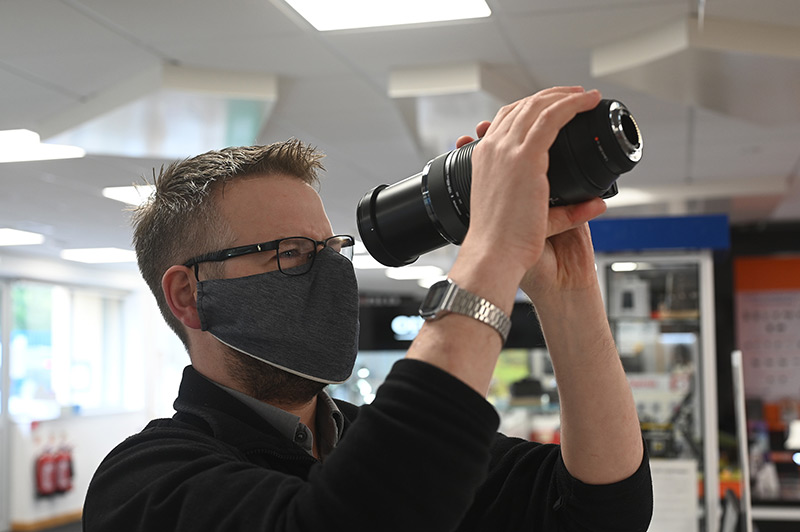
To function perfectly, there should be no visible scratches on either the front or rear glass elements. Faint or very light scratches do happen and will not typically impact results when seen on the front element, but look out for any particularly noticeable marks. However, any scratches whatsoever on the rear element will affect performance and should be avoided.
Despite being quite rare in newer lenses, you should make a point of checking for fungus, which is very difficult to get rid of. Last but not least, scan for dust inside the lens by looking through the front and rear elements in a well-lit environment, or by using a torch. Minor dust will generally have no impact on performance and should have been taken into account in the condition grading.
Check the Battery Slot
Confirm that the camera battery compartment has functional release catches to open and close the door. It’s also important to make sure there are no signs of battery leaks, which may appear as discolouration or residue near the slot. Move on from any camera which shows signs of leaks or a broken battery compartment.
Evaluate the Condition
Conduct a thorough cosmetic appraisal of any camera body you intend to purchase. Light signs of use are commonplace, but keep an eye out for obvious signs of damage, including cracks or scratches, as these are good indications of how well the previous owner cared for the camera.
The LCD screen and viewfinder should be clear from obvious scratches. If available, touchscreen functionality should work as expected and any screen articulation should be precise and hold its position. A heavily damaged screen will not only impair performance, but also affect camera resale value if you decide to part exchange in the future.
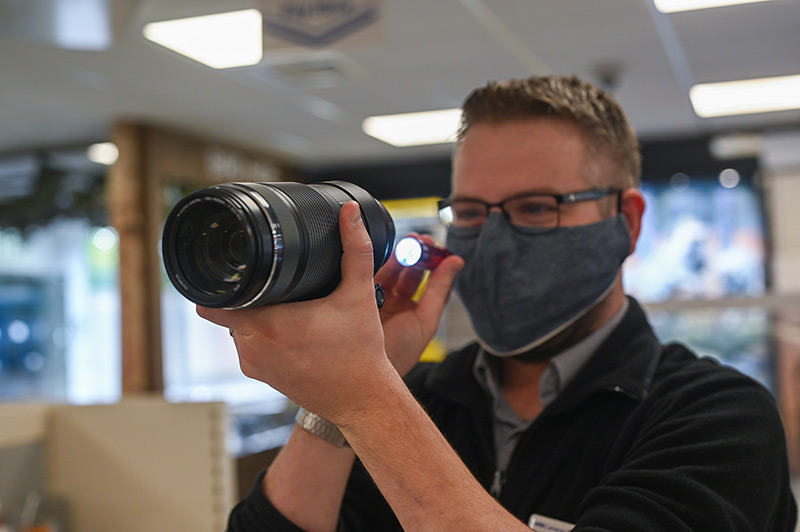
Does the Autofocus Work?
Autofocus (AF) needs to work well in order to track your subject and get sharp results, however a few factors affect the AF of a camera or lens, including:
- Age of equipment
- Whether there has been a substantial knock or accidental drop
- Water or environmental damage
To check the autofocus of a camera body, you’ll need to mount a lens with functioning AF, and vice-versa to test a lens. After selecting the right AF setting, ensure the equipment focuses as expected on stationary subjects in a well-lit environment. Switch between near and far subjects to check the camera acquires focus on each, then view the results as large as possible to confirm sharpness.
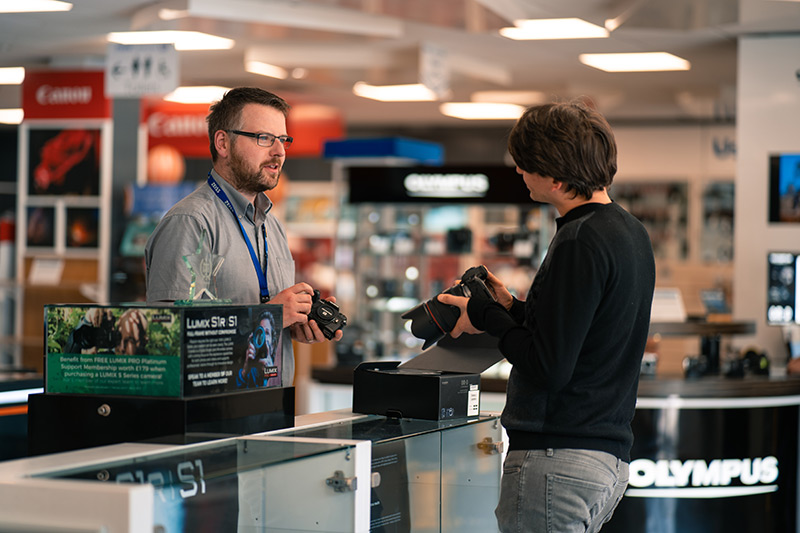
Check the Shutter
A high shutter count on a used camera will reduce the price, just as high mileage does with a car. This is because every camera has an expected shutter lifespan, ranging from around 50,000 to 500,000, which is referred to as actuations.
The shutter needs to be in full working order to correctly expose photos. A damaged shutter may cause inconsistencies such as streaks across images files, which is expensive to repair. To check the shutter, simply take a few shots and examine the files for these signs. You can also upload an image file to a camera shutter count tool to give you the precise number of actuations.
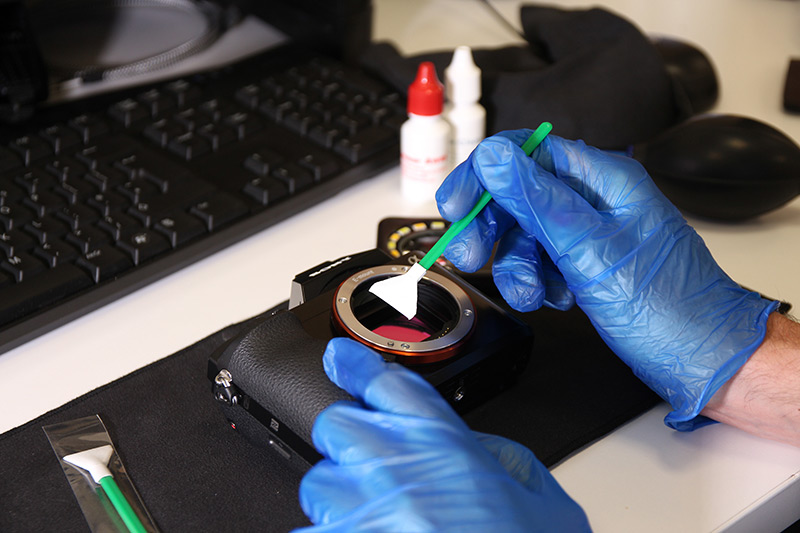
Does Warranty Stand if it’s a Second-Hand Camera?
New camera equipment comes with a warranty to protect the buyer against equipment failure. When buying a second-hand camera from a private seller, you almost certainly won’t get a warranty. However, a reputable camera company will often provide a warranty on used cameras. Here at Park Cameras, we offer a free warranty on all of our used equipment, which demonstrates just how well we have checked everything prior to sale, and provides complete peace of mind for buyers knowing it is in good working condition. You can also expect to find honest product descriptions with accurate information for all items listed.
When considering an item, take the time to read all of the information available, including condition notes and, if possible, test equipment in-person. Avoid anything with signs of being dropped and after inspection, make sure you’re getting a warranty for extra peace of mind.
Now that you know how to evaluate second-hand equipment, browse our huge range of used cameras from the best manufacturers and save on the gear to accompany you on all of your adventures.
Share this post:
By Park Cameras on 21/02/2022

Trade in your old equipment
Fast and easy trade in service ensures your old gear is collected efficiently and you are paid quickly! It's very simple to trade in your unwanted photography gear. Just head over to our dedicated Sell or Part Exchange page, fill out the details, and we'll get back to you with an offer for your old gear. Take the cash, or put it towards the cost of your new gear. It's up to you! Find out more
sign up to the newsletter
Keep up to date on the latest photography news, events and offers. Sign up now
